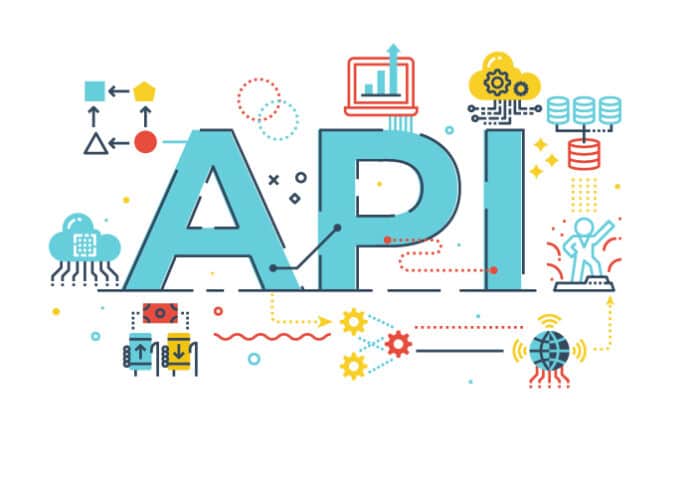Application programming interfaces (APIs) have become integral components that facilitate seamless communication and interaction between different software systems. They play a pivotal role in modern software development, contributing to interoperability, scalability, and innovation across diverse applications. We delve into the fundamentals of APIs, exploring their definition, functions, types, and the significant impact they have on the digital landscape.
An application programming interface, commonly known as API, acts as a set of rules and protocols that enable one software application to communicate and interact with another. Essentially, APIs serve as bridges that facilitate communication and data exchange between different software systems, allowing them to work together cohesively. APIs define the methods and data formats applications can use to request and exchange information, abstracting the underlying complexities and promoting a standardised approach to integration.
Functions of APIs
Data retrieval: APIs enable applications to retrieve data from external sources, be it from databases, web services, or other applications. This facilitates the seamless integration of data from various platforms, enhancing the functionality of the requesting application.
Functionality integration: They allow applications to leverage the functionalities of other software components without needing to understand their internal workings. This promotes modular development, where developers can focus on specific features without worrying about the entire system architecture.
Automation: APIs play a crucial role in automating repetitive tasks by allowing different software systems to communicate and execute functions programmatically. This enhances efficiency and reduces manual intervention in various processes.
Interoperability: They foster interoperability by providing a standardised way for different systems to communicate. This is particularly important in heterogeneous environments where diverse technologies and platforms coexist.
Types of APIs
Web APIs (RESTful and SOAP): Web APIs, commonly based on Representational State Transfer (REST) or Simple Object Access Protocol (SOAP), allow communication over the web. RESTful APIs, in particular, have gained popularity for their simplicity and scalability.
Library-based APIs: Libraries in programming languages often come with APIs that define how external code can interact with the functions and classes provided by the library. Developers use these APIs to integrate pre-built functionalities into their applications.
Operating system APIs: These APIs provide a set of functions and procedures that applications can use to interact with the underlying operating system. They enable applications to perform tasks such as file operations, memory management, and process control.
Hardware APIs: These facilitate communication between software and hardware components, allowing applications to interact with devices such as printers, cameras, and sensors.
Impact of APIs
Innovation: APIs empower developers to build on top of existing platforms, fostering innovation by encouraging the creation of new applications and services that leverage the capabilities of established systems.
Rapid development: By utilising APIs, developers can accelerate the development process, as they can leverage pre-built functionalities and focus on building unique aspects of their applications.
Ecosystem expansion: APIs contribute to the growth of ecosystems as different software products can seamlessly integrate, creating a network effect where the value of each component increases as more applications join the ecosystem.
Business agility: APIs enable businesses to adapt and evolve rapidly by facilitating the integration of new technologies and services. This agility is crucial in the fast-paced digital landscape, where staying competitive requires swift responses to market changes.
Cost efficiency: APIs contribute to cost efficiency by allowing organisations to leverage existing functionalities and services, reducing the need to reinvent the wheel for every project. This results in significant time and resource savings.
User experience enhancement: APIs enable the creation of more feature-rich and connected applications, enhancing the overall user experience. Integrating with third-party services and platforms through APIs allows developers to provide users with a broader range of functionalities.

Challenges and considerations
While APIs offer numerous advantages, their implementation comes with challenges and considerations that developers and organisations must address.
Security concerns: APIs can be vulnerable to security threats, such as unauthorised access, data breaches, and injection attacks. Implementing robust security measures, including authentication and encryption, is crucial to mitigate these risks.
Versioning and compatibility: As APIs evolve, maintaining backward compatibility becomes crucial to ensure that existing applications relying on the API continue to function seamlessly. Proper versioning practices help manage changes without disrupting existing integrations.
Documentation: Comprehensive and up-to-date documentation is essential for developers to understand how to use an API effectively. Well-documented APIs streamline the integration process and contribute to a positive developer experience.
Rate limiting and throttling: To prevent abuse and ensure fair usage, APIs often implement rate limiting and throttling mechanisms. Developers need to be aware of these limitations and design their applications accordingly.
Dependency management: Relying on external APIs introduces dependencies that need to be carefully managed. Changes to the API, service disruptions, or discontinuation can impact the functionality of dependent applications.
Future trends in API development
As technology continues to advance, several trends are shaping the future of API development.
GraphQL: A query language for APIs, it is gaining popularity for its ability to allow clients to request only the specific data they need. This can lead to more efficient and flexible interactions between clients and servers.
Serverless architectures: Serverless computing, where developers focus on writing code without managing server infrastructure, is influencing API development. Serverless architectures can be more cost-effective and scalable.
API gateways: API gateways are becoming more sophisticated, offering features like traffic management, security, and analytics. They act as centralised points for managing and securing API interactions.
Event-driven APIs: Event-driven architectures are gaining traction, allowing applications to respond to events in real-time. APIs play a crucial role in facilitating communication between event producers and consumers.
Hypermedia APIs: Hypermedia APIs include hypermedia links in responses, providing clients with information on how to navigate the API dynamically. This can enhance the discoverability and usability of APIs.
APIs have transformed the landscape of modern software development, serving as the linchpin for interoperability, innovation, and scalability. As technology continues to advance, the role of APIs will only become more critical, shaping the way applications communicate, collaborate, and evolve. Understanding and harnessing the power of APIs is essential for developers and businesses aiming to thrive in the ever-evolving digital ecosystem.









































































